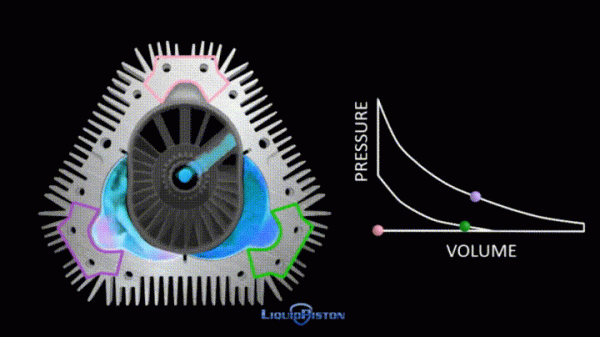Today it seems as though it is fate that internal combustion vehicles will be replaced by EVs. In recent years there has been a huge push from environmentalists and the government to electrify the vehicles we drive every day.
Emissions wise at least, electric vehicles pollute far less than internal combustion vehicles do. Currently, internal combustion engines are responsible for over 10% of carbon emissions in the United States. Additionally, a typical gasoline powered car is only about 40% thermally efficient. This means that out of all the energy stored in the gasoline molecules, only 40% is converted into mechanical energy that drives your car whereas the rest is wasted as heat or vibrations. EVs promise to solve these problems.
By storing energy in a battery, the user can ‘fill’ the car with electricity rather than energy stored in the form of fuel. Using electricity allows the car to theoretically be carbon neutral if the source is renewable such as wind or solar. Even if the electricity is not renewably sourced, EVs still pollute less, having a thermal efficiency of around 90%. This is because sending electricity through a wire to spin a brushless motor is far more efficient than internal combustion. Even if the electricity is obtained by burning fossil fuels just like an internal combustion engine, less would need to be burnt as less energy would be wasted. From the consumer perspective, EVs offer great smoothness and quietness due to the lack of vibrations and combustion of fuel caused by an internal combustion engine.
The benefits of electric vehicles do not, however, come without drawbacks. Electric vehicles are far heavier than regular gas powered cars because of the large batteries. This can be seen by comparing the Subaru Outback and the equivalent electric counterpart, the Subaru Soltera. The Outback weighs 3,661 pounds whereas the Soltera is almost a thousand pounds heavier weighing in at 4,486 pounds. A heavier weight puts more strain on the brakes of the vehicle as well as making it more dangerous to other vehicles on the road in the event of an accident. Another critical flaw with electric vehicles is the range and charging times. It takes roughly 5 minutes to fill up the tank of a gas powered vehicle, whereas EVs take at least 30 minutes on a high amperage charger. In most cases, however, charging will take several hours. Additionally, for most electric vehicles the range is inferior to their gas-powered counterparts. The Subaru Outback, for example, has a range of almost 600 miles, whereas the Soltera will only last around 227.
Yet another problem with electric vehicles is the longevity of the battery. As Mr. Poranski stated, “one thing I am weary of is the cost of replacing the battery.” In most cases, an EV battery will only last around 10 years or 100,000 miles. When it dies, it is a tremendous cost to the owner, one so great it may be more than the current value of the car. This greatly reduces the lifespan, which in turn increases the cost of ownership and creates a massive amount of E-waste. This alone makes Mr. Porankski question how much better EVs really are for the environment: “I don’t know how much better for the environment they really are. Think about the metals needed to produce these batteries. Lithium mining is not great for the environment.”
All of these factors increase the cost of ownership and make buying an EV unattractive to the consumer. For most applications, it is simply not practical for the consumer to invest in an electric car. “Buying an EV right now is hard to justify…the high costs is pricing people out.” According to Mr. Sidmore, “The government has to make it fair financially for the consumer to buy electric vehicles. There needs to be some sort of incentive structure in place if they want people to buy them.” Without demand, electric vehicle technologies will be slow to develop and may not take hold. Mr Poranski stated that “the auto industry converting to all electric is something that [he] can’t see happening.”
Recently, a company called Liquid Piston introduced a product that promises to solve the problems with internal combustion engines. The X-Engine, as they call it, is fundamentally different from a traditional internal combustion engine. A typical internal combustion engine (as seen in the two animations below)
uses reciprocating cylinders to rotate the crankshaft. The crankshaft rotates and provides power to the wheels. The conversion of reciprocating force into rotational force adds complexity, inefficiency and vibrations. The X-Engine (below)
does not convert reciprocating force to rotational force. Instead, it uses a rotor, which is connected directly to the crankshaft. The rotor is moved by combustion. This is a far simpler design with fewer moving parts. Fewer moving parts means less weight (up to 10 times better power to weight ratio in certain applications). Additionally, the lack of reciprocating force means that there are fewer vibrations allowing for more energy to be used to rotate the crankshaft rather than being lost into the surrounding environment. This allows for up to 30% improved efficiency over conventional internal combustion engines.
Better efficiency and a lighter weight mean the vehicle will have better emissions. There is, however, a more critical benefit to this design. According to Liquid Piston, the X-Engine can run on a variety of different fuels. The X-Mini, for instance, can run on gasoline, diesel, propane, kerosine, Jet A, and even hydrogen. Being able to accept a wide range of possible fuels makes it easier for a sustainable fuel to be developed. Hydrogen, for instance, is a very attractive solution. Obtaining hydrogen is quite simple. It can be done by separating the hydrogen and oxygen atoms from each other in water. When combusted, water is produced again. As Mr Poranski put it, “You burn hydrogen and out the tailpipe you get water!”
The biggest limitation of the X-Engine appears to be the manufacturing process. The complex rotor and housing have to be machined out of aluminum on a CNC machine. Mr. Sidmore claims, “If this engine is to see mass production, the manufacturing process has to become cheaper or else it will not be able to compete with traditional internal combustion engines because of the cost.”
If this engine’s manufacturing process can be reproduced on a larger scale, it has the potential to change the automotive industry. Internal combustion engines would become far more efficient and if hydrogen is employed as a fuel source they would have zero emissions. It is possible we may see this technology in everything from lawnmowers to generators to cars. Only time will tell.








